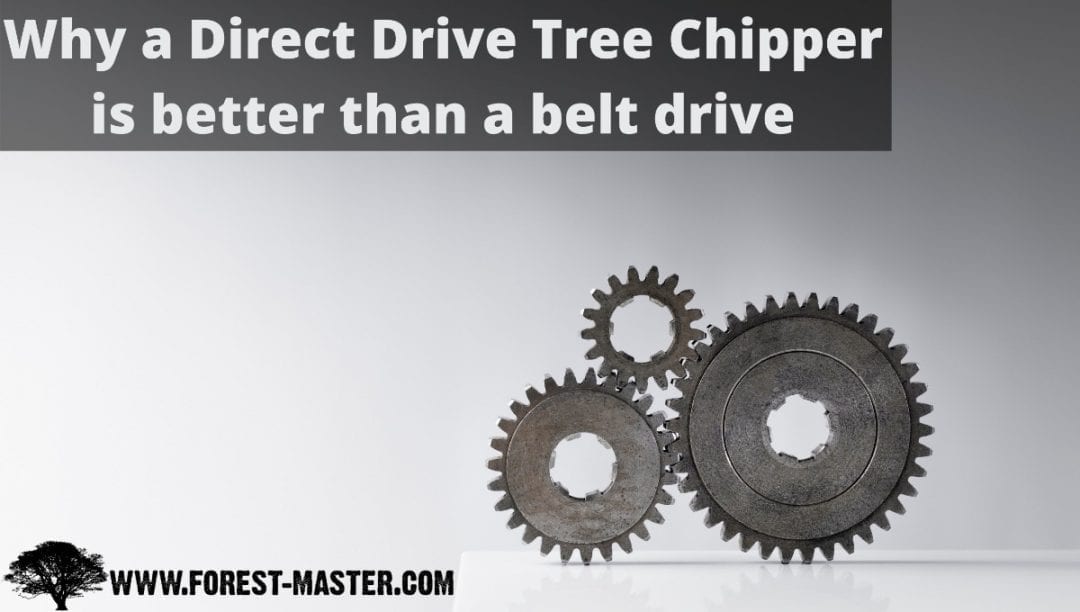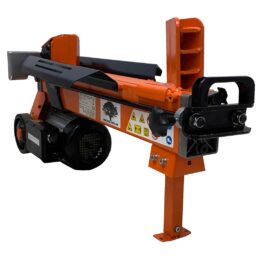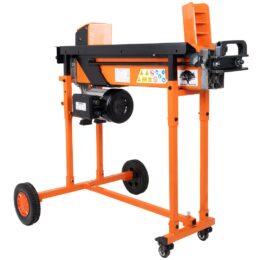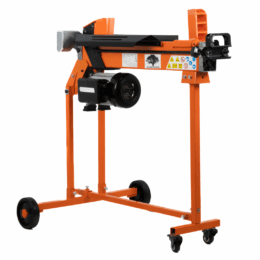Last Updated on May 28, 2021 by Forest Master
As you’re probably well aware, our chippers are Direct Drive rather than Belt Drive. Now, you’re probably wondering Why a Direct Drive Tree Chipper is better than a belt drive? Well, it dramatically reduces your maintenance time and costs – who doesn’t love that? So in this blog, explain all you need to know about belt-driven machines and why we switched to direct drive. See our range of direct drive wood chippers here.
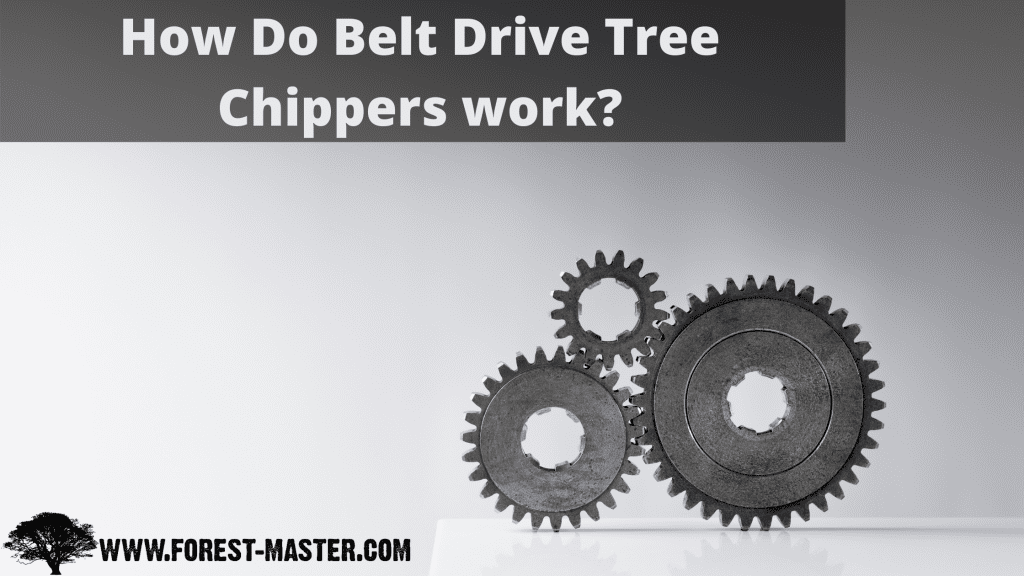
How do belt drive tree chippers work?
A belt-driven tree chipper works off a pair of pulleys attached to opposing shafts which are connecting flexible belts. This method has been used for over 200 years, the first versions were flat and ran on flat pulleys. This later developed into the V-belt in 1917. As this developed, the need to improve speed and eliminate variations resulted in toothed belts around 1950.
Tree chipper belts are usually friction drive or positive drive and are often made of leather, rubber, or fabric with a V-shape cross-section and require substantial tension to work. Friction drive works on friction between the belt and pulley to transmit power. Positive drive work off the engagement of the teeth with the grooves on the pulley. V-belts require less tension and work well in connecting shafts that are close together.
When overloaded flat and v belts can slip which can sometimes be favorable as it can prevent breaking parts. When connecting nonparallel shafts, flat belts do not run off the pulley. It can sometimes be the case that they require multiple pulleys to operate the tree chipper.
Positive drive, timing & toothed belts feature teeth with even spacing that fit into matching grooves on the periphery of the pulley. They have a lot of advantages but lack overload protection of a direct drive tree chipper.
So, as you can see, there are a lot of opportunities for things to go wrong with a belt-driven tree chipper. Whether it’s a toothed belt buckling under pressure or a belt snapping.

Is a direct drive tree chipper better?
A direct-drive system offers “increased efficiency” with fewer moving parts which result in less maintenance and fewer replacements. If a tree chipper has higher torque, it enables faster start-up speeds and less likely to fail from the extraneous force. Moreover, you’re not at the mercy of a belt malfunctioning.
It’s not simply a case of a belt snapping, but it could become loose, cracked or stretched. This can affect the performance of your tree chipper and ultimately result in replacing the belt, or even the whole unit.
Our direct drive machines are market leading, innovative and powerful. They’re perfect to pick up and go to any job with the power to see it through. Whether it’s the lightweight electric 4hp model that produces a whopping 2800 rpm. Or if you need a bit more bite, our petrol model offers an incredible 3600 rpm and 6hp that makes light work of!
Did our blog help you see why a direct drive tree chipper is best? Let us know! Comment below! Want more content? Check out our burning guide blog

